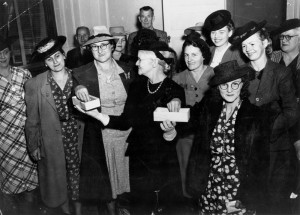 A lot of the communication about supporting social good comes from organizations and is directed to individuals. And a great deal of that communication never gets seen by the individuals it seeks to impress.
A lot of the communication about supporting social good comes from organizations and is directed to individuals. And a great deal of that communication never gets seen by the individuals it seeks to impress.
Gmail shuffles it off to a “promotions” tab, lumped into the same category as sales on movie rentals. Facebook structures the newsfeed to hide posts from organizations, trying to keep posts from friends in the fore even if users have asked for updates from a favorite charity. Getting heard as a nonprofit is getting harder with these changes, but there is an army of allies who can help turn this picture around.
Donors.
Donors, as it turns out, are largely people. Yes, nonprofits consistently chase grants from foundations, governments and other still bigger nonprofits because it feels great to catch a large sum of money. But the majority of giving in the United States comes from individuals. Giving USA reports at least $335 billion in charitable giving in 2013. 72% of that number comes from individuals. Those donors don’t all think of themselves as philanthropists and mission communicators.
At least, not yet.
The Bill and Melinda Gates Foundation reports an endowment of $43.5 billion, and annual giving of $3.9 billion worldwide. Those are impressive numbers, but still dwarfed by the hundreds of billions the combined rest of us give. What makes them disproportionately powerful is they chose a mission statement and report on their work. Most of the rest of the givers in the United States don’t have a mission statement or an annual report.
At least, not yet.
What has stood in the way of millions of individuals counting themselves as philanthropists has been the misperception that they don’t give enough to make a difference like those big foundations do. For any single person, that is mostly true. Aggregated, however, the individual is mighty. Aggregated, the crowds can do things even the large foundations cannot do.
We started to see this power with the onset of Kickstarter. What started with just a few million dollars in 2009 is now collecting over $500 million in pledges every year. And that is just one crowdfunding site. There are many, many places where this kind of small-scale giving adds up to large scale impact. The challenge now is to add up the tally, in both dollars and mission statements, and see the power of that collective impact.
Any group of millions has to start with a single individual. CommitChange has a Donor Profile page which is a starting point for the individual philanthropist annual report. Many other charitable giving sites, such as GiveMN.org, also have personal reports to show the different gifts a donor has made through the site. The next step is to allow those sites to communicate with each other to create ad-hoc collaborative giving reports. What if everyone who gave to a charity on #GivingTuesday could be collected in one massive report of impact, regardless if they gave through CommitChange or some other donation processing service? If individual giving has even more impact than large scale giving, let’s see that impact and let it help shape philanthropy.
Seeing a higher level of data and choosing relevance is on the way. Charity Navigator, one of the largest “watchdog” organizations around giving, has just parted ways with its long-term CEO because the future of its work is in structuring technology to show impact. The board there can see the need to start collaborating more data, for lots of good reasons.
Nonprofits can be a leading force in these movement of the masses. Today, many charities direct their communication to only their mission, only their impact, and then privately thank their supporters. Organizations like Bridgespan are working to aggregate impact data to understand the power of collective work. Charities can start reporting their impact as an integral part of a whole, not a voice in the wilderness. Likewise, nonprofits must now start moving forward to ask their donors to tell the story of their own philanthropy. Rather than only a private thank you (though of course those will continue) charities can encourage – never require – donors to make a public statement about their gifts of time and treasure. Both the charity and the donor can benefit from a public conversation about their work, and perhaps inspire new donors to join in.
Not all data need be connected to individual names to be useful. Much as CommitChange is doing with its API, allowing certain types of aggregated data to be shared can be tremendously useful. When the data breaks free from proprietary silos, millions of donors will understand their collective impact. Together, we can accomplish great things.
Written by Steve Boland for the CommitChange blog, and reposted here with permission. This topic was also covered in a webinar with Roderick Campbell.
